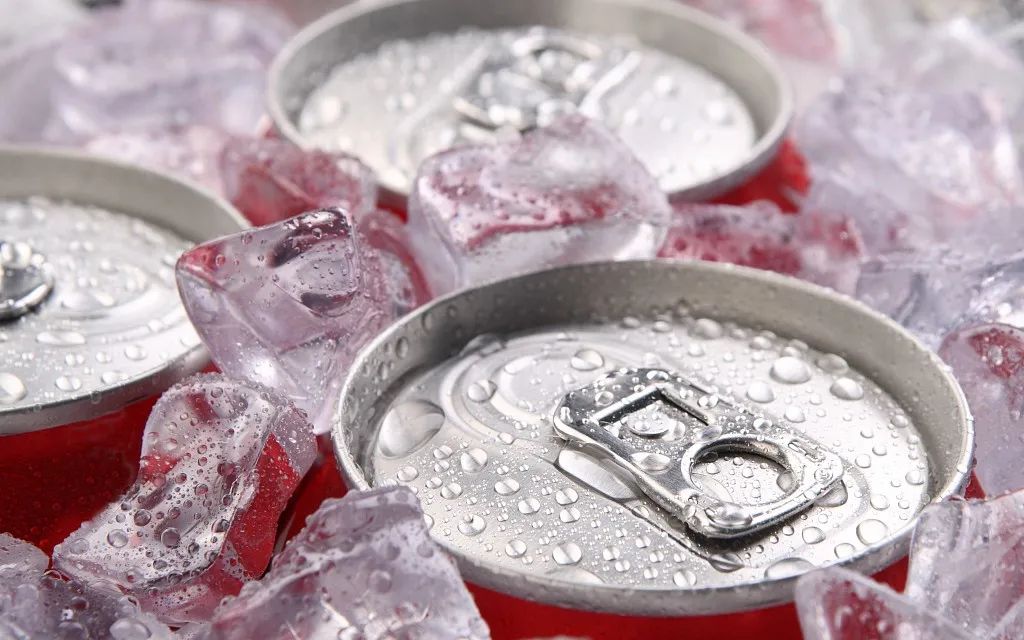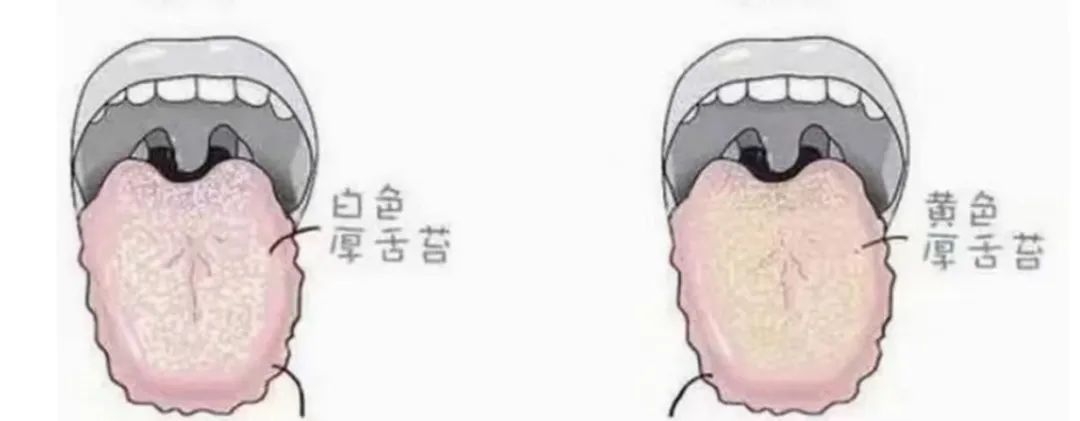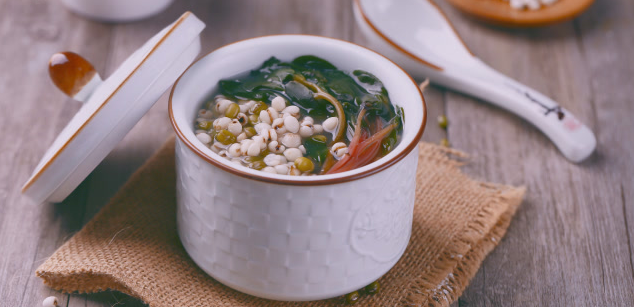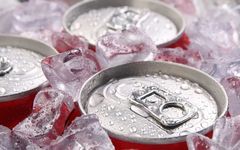
 It is often heard that people say they have excessive dampness and try various methods to eliminate it, but the results are not ideal, and sometimes it seems to increase. This is because they do not differentiate the types of dampness; they only know there is dampness but do not understand the difference between 湿热 (shī rè) – damp-heat and 寒湿 (hán shī) – cold-dampness. Different types of dampness require different methods of elimination; without targeted treatment, the dampness will only increase. Today, 《大医典 (Dà Yī Diǎn) – The Great Medical Canon》 will discuss with you why modern people have such heavy dampness, why it is important to distinguish between cold-dampness and damp-heat before eliminating dampness, and how to expel cold-dampness and eliminate damp-heat.Why Do Modern People Have Such Heavy Dampness?Modern people have particularly heavy dampness; what is the reason for this? The fundamental way to eliminate dampness is to change unhealthy lifestyle habits. If these habits are not changed, although dampness can be removed through medication, it will quickly return. We cannot always rely on medication to maintain balance in the body, so good lifestyle habits are particularly important for us.First: Cold BeveragesNowadays, regardless of winter or summer, everyone drinks cold beverages. Consuming icy drinks can harm the 脾阳 (pí yáng) – spleen yang, which immediately damages the yang energy that controls dampness, resulting in an inability to control dampness, leading to increased dampness.
It is often heard that people say they have excessive dampness and try various methods to eliminate it, but the results are not ideal, and sometimes it seems to increase. This is because they do not differentiate the types of dampness; they only know there is dampness but do not understand the difference between 湿热 (shī rè) – damp-heat and 寒湿 (hán shī) – cold-dampness. Different types of dampness require different methods of elimination; without targeted treatment, the dampness will only increase. Today, 《大医典 (Dà Yī Diǎn) – The Great Medical Canon》 will discuss with you why modern people have such heavy dampness, why it is important to distinguish between cold-dampness and damp-heat before eliminating dampness, and how to expel cold-dampness and eliminate damp-heat.Why Do Modern People Have Such Heavy Dampness?Modern people have particularly heavy dampness; what is the reason for this? The fundamental way to eliminate dampness is to change unhealthy lifestyle habits. If these habits are not changed, although dampness can be removed through medication, it will quickly return. We cannot always rely on medication to maintain balance in the body, so good lifestyle habits are particularly important for us.First: Cold BeveragesNowadays, regardless of winter or summer, everyone drinks cold beverages. Consuming icy drinks can harm the 脾阳 (pí yáng) – spleen yang, which immediately damages the yang energy that controls dampness, resulting in an inability to control dampness, leading to increased dampness. Second: Air ConditioningThe most important principle in TCM is the correspondence between heaven and man. Our bodies change with the seasons. In summer, it should be hot, the skin should open, the lungs govern the skin and hair, and the pores should open to allow sweat to escape. The lung qi helps fluids to move outward. In summer, when yang energy is external, if air conditioning is used, sweat cannot escape, and the water consumed has no way to exit, which can damage the lung and its yang energy. The lungs govern water, and as a result, they cannot transform water, leading to excessive dampness.
Second: Air ConditioningThe most important principle in TCM is the correspondence between heaven and man. Our bodies change with the seasons. In summer, it should be hot, the skin should open, the lungs govern the skin and hair, and the pores should open to allow sweat to escape. The lung qi helps fluids to move outward. In summer, when yang energy is external, if air conditioning is used, sweat cannot escape, and the water consumed has no way to exit, which can damage the lung and its yang energy. The lungs govern water, and as a result, they cannot transform water, leading to excessive dampness. Third: ExerciseModern people have too few opportunities for exercise. They spend long hours sitting in offices, under air conditioning, commuting in cars, and then resting at home, with very few opportunities for outdoor activities. Many people are afraid of sweating, but sweating is actually a way for the body to circulate qi and blood and expel dampness.
Third: ExerciseModern people have too few opportunities for exercise. They spend long hours sitting in offices, under air conditioning, commuting in cars, and then resting at home, with very few opportunities for outdoor activities. Many people are afraid of sweating, but sweating is actually a way for the body to circulate qi and blood and expel dampness. Fourth: Drinking WaterAnother issue is that many people drink excessive amounts of water without knowing how much they should consume daily. The heart belongs to the fire element in the five elements, and water controls fire; water is used to extinguish fire. When there is heavy dampness, it can obscure the heart yang, so drinking large amounts of water can lead to heart problems. For the correct way to drink water, please refer to the link: (Drinking More Water for Detox? Incorrect Drinking Methods May Lead to Water Toxicity).
Fourth: Drinking WaterAnother issue is that many people drink excessive amounts of water without knowing how much they should consume daily. The heart belongs to the fire element in the five elements, and water controls fire; water is used to extinguish fire. When there is heavy dampness, it can obscure the heart yang, so drinking large amounts of water can lead to heart problems. For the correct way to drink water, please refer to the link: (Drinking More Water for Detox? Incorrect Drinking Methods May Lead to Water Toxicity). How to Distinguish Between Damp-Heat and Cold-Dampness at a Glance?Different types of dampness require different methods of elimination; without targeted treatment, the dampness will only increase.To effectively eliminate dampness, one must first understand the difference between damp-heat and cold-dampness. From a nature perspective, the dampness in the human body can be simply divided into cold-dampness and damp-heat. Based on the characteristic that dampness tends to combine with other pathogenic factors, damp-heat occurs when dampness combines with heat, while cold-dampness occurs when it combines with cold. Dampness can be formed from external sources or from the spleen and stomach failing to transport fluids, leading to internal generation. Therefore, to effectively eliminate dampness, one must first learn to identify the type of dampness.To distinguish the nature of dampness in your body, you can make a preliminary judgment by looking at your tongue.People with internal dampness generally have a tongue that is larger and thicker than normal; this type of tongue is referred to as 胖大舌 (pàng dà shé) – swollen tongue. The characteristics of a swollen tongue are that when extended, it almost fills the entire mouth. Due to the tongue body being swollen, it will be pressed by the teeth, and the edges of the tongue will have noticeable tooth marks.A swollen tongue is a common feature of both damp-heat and cold-dampness; however, what is the difference between the two? Individuals with damp-heat generally have a tongue that is slightly red with a yellow and greasy coating; while those with cold-dampness have a tongue that is pale with a white and greasy coating.
How to Distinguish Between Damp-Heat and Cold-Dampness at a Glance?Different types of dampness require different methods of elimination; without targeted treatment, the dampness will only increase.To effectively eliminate dampness, one must first understand the difference between damp-heat and cold-dampness. From a nature perspective, the dampness in the human body can be simply divided into cold-dampness and damp-heat. Based on the characteristic that dampness tends to combine with other pathogenic factors, damp-heat occurs when dampness combines with heat, while cold-dampness occurs when it combines with cold. Dampness can be formed from external sources or from the spleen and stomach failing to transport fluids, leading to internal generation. Therefore, to effectively eliminate dampness, one must first learn to identify the type of dampness.To distinguish the nature of dampness in your body, you can make a preliminary judgment by looking at your tongue.People with internal dampness generally have a tongue that is larger and thicker than normal; this type of tongue is referred to as 胖大舌 (pàng dà shé) – swollen tongue. The characteristics of a swollen tongue are that when extended, it almost fills the entire mouth. Due to the tongue body being swollen, it will be pressed by the teeth, and the edges of the tongue will have noticeable tooth marks.A swollen tongue is a common feature of both damp-heat and cold-dampness; however, what is the difference between the two? Individuals with damp-heat generally have a tongue that is slightly red with a yellow and greasy coating; while those with cold-dampness have a tongue that is pale with a white and greasy coating. By analyzing the tongue appearance, once you distinguish whether it is cold-dampness or damp-heat, the approach to eliminating dampness becomes clear. For those with damp-heat, one should use methods to clear heat and eliminate dampness, while for cold-dampness, one should use warming methods to transform cold-dampness.How to Eliminate Different Types of Dampness?Now that we understand the difference between cold-dampness and damp-heat, the next step is how to eliminate dampness. Different types of dampness require different therapies; those with cold-dampness can use warming methods to transform dampness, while those with damp-heat can use methods to clear heat and eliminate dampness.1. Dietary Therapy for Cold-Dampness IndividualsGinger and Sand Ginger TeaIngredients:3g of sand ginger (砂仁 – shā rén), 3g of dried tangerine peel (陈皮 – chén pí), 5g of ginger (生姜 – shēng jiāng).Method:Boil ginger and dried tangerine peel in warm water, then add sand ginger; decoct and drink as tea, noting that sand ginger should not be boiled for too long.Effect:Warms and transforms cold-dampness.
By analyzing the tongue appearance, once you distinguish whether it is cold-dampness or damp-heat, the approach to eliminating dampness becomes clear. For those with damp-heat, one should use methods to clear heat and eliminate dampness, while for cold-dampness, one should use warming methods to transform cold-dampness.How to Eliminate Different Types of Dampness?Now that we understand the difference between cold-dampness and damp-heat, the next step is how to eliminate dampness. Different types of dampness require different therapies; those with cold-dampness can use warming methods to transform dampness, while those with damp-heat can use methods to clear heat and eliminate dampness.1. Dietary Therapy for Cold-Dampness IndividualsGinger and Sand Ginger TeaIngredients:3g of sand ginger (砂仁 – shā rén), 3g of dried tangerine peel (陈皮 – chén pí), 5g of ginger (生姜 – shēng jiāng).Method:Boil ginger and dried tangerine peel in warm water, then add sand ginger; decoct and drink as tea, noting that sand ginger should not be boiled for too long.Effect:Warms and transforms cold-dampness. Precautions – Four Types of People Who Should Avoid Ginger:1. Constipated individuals: Constipation is often due to intestinal heat; excessive consumption of ginger can worsen symptoms.2. Halitosis: TCM believes that halitosis is often caused by stomach heat; ginger is warm in nature, and those with stomach heat will find their symptoms exacerbated by consuming ginger, potentially leading to toothache, headache, or hemorrhoidal bleeding.3. Individuals with Yin deficiency: Those with Yin deficiency and dryness often experience heat in the palms and soles, excessive thirst, and sweating; ginger, being warm and pungent, can worsen symptoms of Yin deficiency.4. Individuals with significant internal heat: If one has heat-related conditions, ginger should be paired with cooling herbs to neutralize its warming nature.2. Dietary Therapy for Damp-Heat IndividualsPortulaca oleracea, Poria cocos, and Mung Bean SoupIngredients:200g of fresh portulaca oleracea (马齿苋 – mǎ chǐ xiàn), 30g of poria cocos (土茯苓 – tǔ fú líng), 50g of mung beans (绿豆 – lǜ dòu). (Serves 1)Method:Wash fresh portulaca oleracea, then add it together with poria cocos and mung beans, and simmer until soft; drink the soup.Effect:Treats dysentery, enteritis, abdominal pain with bloody stools, and has heat-clearing, dampness-eliminating, and detoxifying effects.
Precautions – Four Types of People Who Should Avoid Ginger:1. Constipated individuals: Constipation is often due to intestinal heat; excessive consumption of ginger can worsen symptoms.2. Halitosis: TCM believes that halitosis is often caused by stomach heat; ginger is warm in nature, and those with stomach heat will find their symptoms exacerbated by consuming ginger, potentially leading to toothache, headache, or hemorrhoidal bleeding.3. Individuals with Yin deficiency: Those with Yin deficiency and dryness often experience heat in the palms and soles, excessive thirst, and sweating; ginger, being warm and pungent, can worsen symptoms of Yin deficiency.4. Individuals with significant internal heat: If one has heat-related conditions, ginger should be paired with cooling herbs to neutralize its warming nature.2. Dietary Therapy for Damp-Heat IndividualsPortulaca oleracea, Poria cocos, and Mung Bean SoupIngredients:200g of fresh portulaca oleracea (马齿苋 – mǎ chǐ xiàn), 30g of poria cocos (土茯苓 – tǔ fú líng), 50g of mung beans (绿豆 – lǜ dòu). (Serves 1)Method:Wash fresh portulaca oleracea, then add it together with poria cocos and mung beans, and simmer until soft; drink the soup.Effect:Treats dysentery, enteritis, abdominal pain with bloody stools, and has heat-clearing, dampness-eliminating, and detoxifying effects. Written by | Chen Gan Gan, He ChengEdited by | Chen Gan GanThis article is originally published by 《大医典 (Dà Yī Diǎn) – The Great Medical Canon》. Please feel free to share, but kindly indicate the source.Image source: Internet, please delete if infringing.
Written by | Chen Gan Gan, He ChengEdited by | Chen Gan GanThis article is originally published by 《大医典 (Dà Yī Diǎn) – The Great Medical Canon》. Please feel free to share, but kindly indicate the source.Image source: Internet, please delete if infringing.

